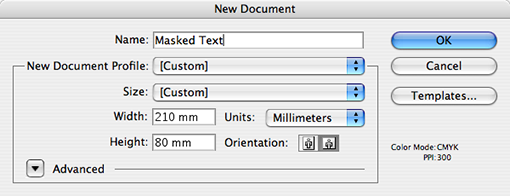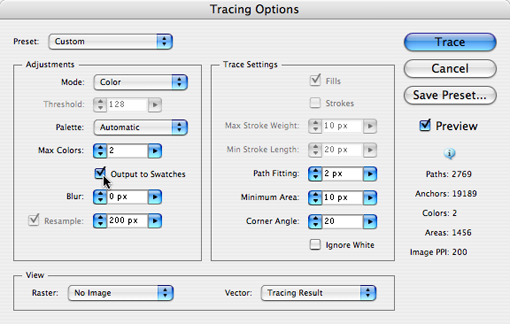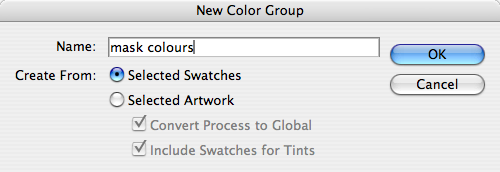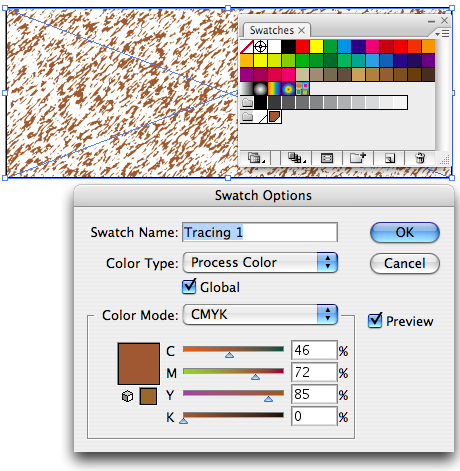Digitip 064 – Adobe Illustrator CS3
This tip is Part 2 of a three-part tip. Part 1 describes how the Photoshop artwork that is placed into the Illustrator file was created and Part 3 will create the Text Effect that will give our finished result.

We’re ready to place the previously created Photoshop graphic in Illustrator now. But let’s create a New Illustrator document first that has the same width and height as the Photoshop file.

File > Place. Enable the Link option in the Place dialog. This will allow further editing of the Photoshop file at a later stage.

Tracing the Graphic
From the Live Trace menu in the Control panel select Tracing Options…

What I’d like to do is generate two colour swatches that I can easily edit, whilst retaining Live Trace ability. To generate these swatches on the fly as part of the Live Trace functionality, change the following Adjustments settings:
Set Mode to Colour, Set Max Colours to 2 and Enable Output to Swatches. With the Preview box ticked you’ll be able to see the Live Trace result. Feel free to make additional adjustments.

Click Trace to apply the settings and generate the swatches.

To make it a bit easier to identify the two swatches that are generated, shift-click the swatches in the Swatches panel, then select Create Colour Group from the Swatches panel menu. Name the Colour Group and select Create From: Selected Swatches.
Click OK.
Amending the colours
Editing the colours of the Colour Group is as easy as double clicking the colour and amending the settings.

We’re now ready to get the text part of this three-part tip happening, let’s continue at Part 3.
Leave a Reply